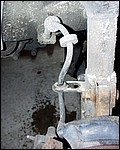 |
Jack your car up and remove your wheels from the car, turn your steering
pointing the caliper outwards from the wheel well it will make your task
easier. now, you need to remove the brake line.
|
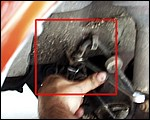 |
the red box highlights the two nuts you are going to work with, the bottom
nuts is the one attached to the hard line, and is the one you should
unscrew, this will prevent twisting the brake line around.
|
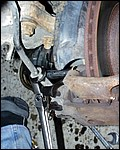 |
Remove the top bolt of the carrier assembly (we will remove caliper, carrier
and pads all in a single time.
|
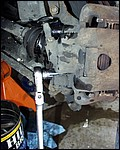 |
remove the bottom bolt of the assembly and remove the assembly from the
wheel. UN-screw the small Phillips screw holding your rotor in place (if you
don't have one, don't worry about it), just remove the rotors form the
wheel. |
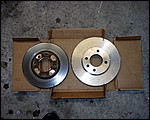 |
This pictures shows the 9.4 8v rotor on the left and the new 16v 10.1 rotor
on the right...bigger is better !
|
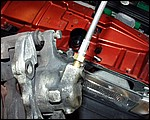 |
Take your brake line and screw the end into the caliper.
|
 |
From the original line, pull out the center rubber grommet and fit it unto
the stainless steel line, you will need this.
|
 |
Here we see the 16v caliper (left) with stainless steel line attached, and
the caliper assembly (right)
|
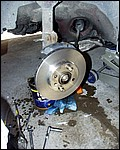 |
Remove any grim/rust from the hub, and reinstall your new 10.1 rotor in
place, If you do not have the mini screw to hold it in place (like I do) use
two wheel bolts to hold it in place as picture shows.
|
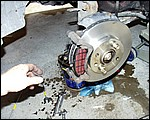 |
next assemble the carrier unto the hub, and slip your new pads into the
slots.
|
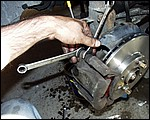 |
Gently Compress the piston back into the caliper and slip the caliper unto
the carrier, the picture shows the location of the bolts to tighten to hold
the assembly in place.
|
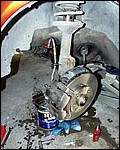 |
Re-attach your brake line unto the hard line, don;t forget to slip the
rubber grommet into place as seen in this picture. once you have done this
side, repeat the whole process for the other wheel, I kept the car on stands
so both wheel would be "open" for the last steps explained below.. the
bleeding process.
|
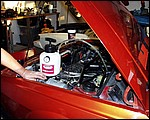 |
We see the pressure bleeder attached to the master cylinder, this make
brake bleeding an easy task. This tool keeps a constant pressure on the
brake system and helps get rid of rust and water from the lines. Starting
with the rear wheels (accessible from under the car without lifting it off
the ground) then doing the front wheels.
|
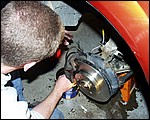 |
Here we see my friend George Curl, bleeding the front brake system, letting
the brake fluid collect in a can, until the new brake fluid (will come out
clear after a while) comes out.
|





